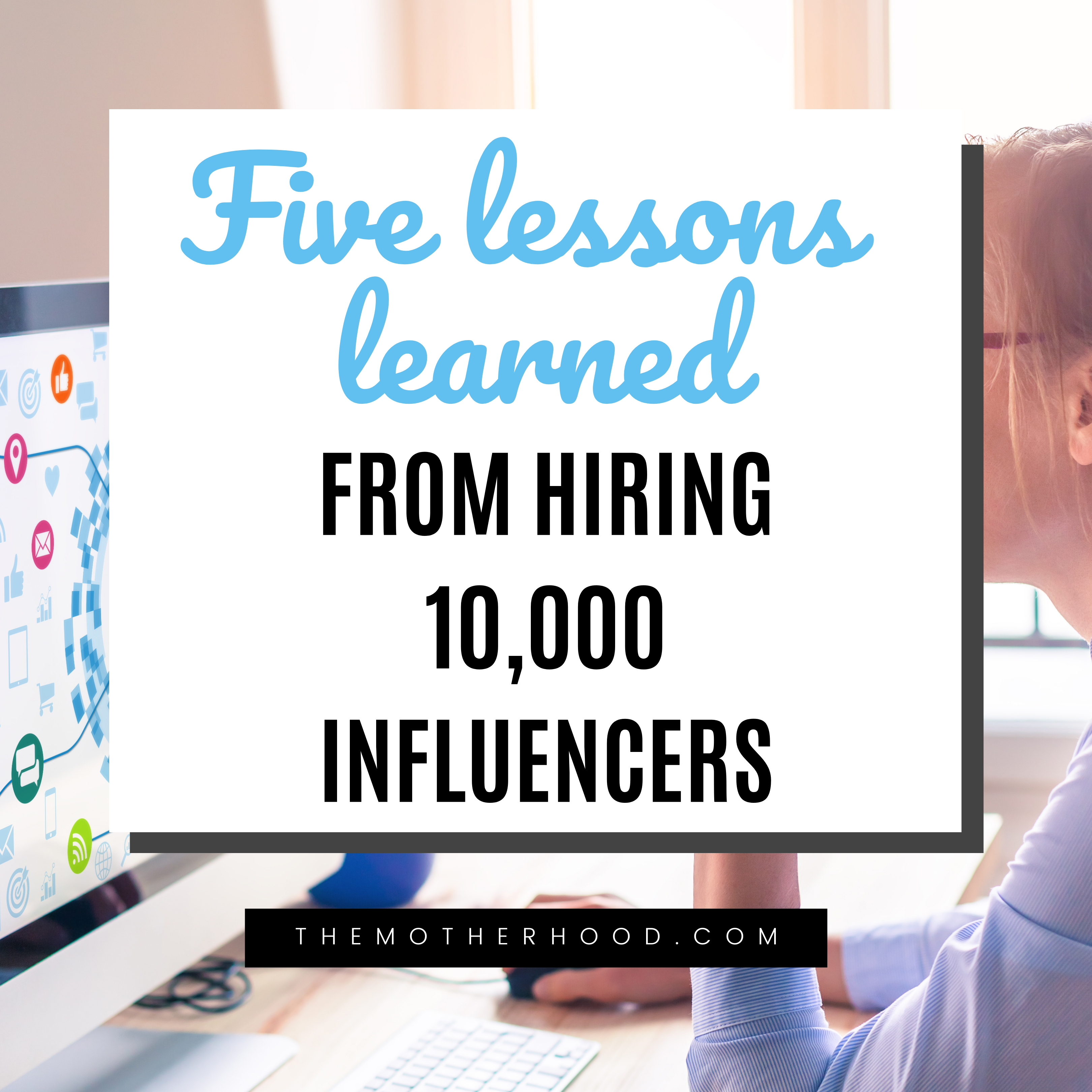Our team recently had the opportunity to speak to a group of senior-level media relations professionals – including many former journalists – about the tenets of influencer marketing. Going into this session with Michael Smart, we knew we’d be facing an eager but tough crowd. To some traditional PR pros, paying influencers can be negatively branded “pay for play”.
We don’t see paying influencers in that light – at all. The Motherhood’s origin story is one for another post, but after nearly 15 years in business and hiring upwards of 10,000 influencers to create content for blue chip brands, start-ups, service organizations and everything in between, you learn a thing or two about the power of paid influencer partnerships.
✅ Paying influencers is non-negotiable.
In the early days of influencer marketing (before it was even called that), we weren’t just fighting to prove that working with bloggers deserved a place in the marketing mix, we were also making the case to our clients that those bloggers needed to be paid for their time, creativity, the equipment and overhead necessary to create content, and, most importantly, the loyal community and trust they’ve worked hard to build and earn. Paying for content was a radical concept at the time. We didn’t just advocate for paying influencers, we insisted upon it. For several of those early years, it was an uphill battle and took a lot of convincing.
Influencer compensation is now table stakes. However, the form of that compensation is still a discussion we have from time to time. Influencers should be paid in money for their time, creativity and community, full stop. Brands have seen the light and we’re (mostly) no longer fighting for fair compensation.
✅ Everything else is negotiable.
We get asked all the time about how much it costs to work with influencers, and the answer is an accurate, albeit frustrating, “it depends.” We negotiate fees based on the social platform, niche, creative parameters, client review process, exclusivity, usage, ownership, whitelisting permission, turnaround time, and much, much more. We’ve paid relatively small fees for a single piece of content from micro influencers and as much as five-to-six figures for long-term macro ambassadorships.
There is no standard rate and each and every element of a campaign must be identified, priced and negotiated accordingly. A seasoned pro will know about commonly overlooked hidden fees and ensure they’re wrapped up into the contract so there are no surprises later.
✅ What’s old is new again.
When you’ve been in business since the beginning, you have the opportunity to witness trends rise, fall and come back around again. In this case, I’m talking about blogs.
When we first started hiring influencers, the content almost always included a blog post. Then, when the visual and video boom happened, the focus was IG content, and influencers’ rising fees proved the demand. We were hiring more influencers at higher rates to produce fewer pieces of content.
For a period of a few years, blog posts were all but an afterthought. Blog posts evolved from a standard ask to a mostly absent medium and now to a value-added extra. Today, some of the savviest brand marketers are rightly acknowledging their place in the content mix and asking for blog posts to be included.
The time investment in creating a creatively written blog post that tells a story, skillfully integrates brand messaging and delivers genuine value to readers – and don’t forget the beautiful, original photography – cannot be underestimated. Marketers should be prepared to pay a premium for longer-form content, but think about the long game. The SEO value of a blog post (and the Pinterest pins that continue to drive traffic to the post for years after the publish date) is undeniable. You may pay more up front, but the value appreciates over time.
✅ Content value is changing.
The lifespan of a tweet can be as short as 15 minutes, Facebook is slightly longer than that and the half life of Instagram posts can be about a day. Considering all of the behind-the-scenes work that influencers put into creating their content – hours of photography, writing, editing, revising, publishing and engaging – not getting more mileage out of those posts is a missed opportunity.
Think of influencers’ social media posts as building a content library. When brands broaden their use of UGC – particularly influencer content – they find it frequently outperforms their owned content on many measures, including return website visitors, digital ad CPC and CTR and email CTR.
When creating a campaign, think about the kind of content that would be useful for a particular moment in time (things like spring cleaning, holiday or a launch) as well as more evergreen moments, and build an influencer brief around those content needs. Having access to on-brand, high-quality images and copy can greatly enhance nearly every part of the marketing mix.
❗ Important caveat: Influencers must be aware of the ways in which a brand will potentially use their content, both during the campaign and after. Again, being crystal clear on the content parameters up front and the negotiation of usage rights is essential to make sure the partnership is equitable and valuable to all parties. While expanded usage rights can cost more initially, being able to reuse high-performing content time and time again is often more time- and cost-efficient than starting from scratch.
✅ Diversified income streams = more selectivity. This is good!
In the beginning, the majority of influencers’ income was through sponsored content for brands (#ad). That arrangement often worked hand-in-hand with affiliate income (most commonly seen through “swipe ups”) and ad placements on their blogs, YouTube channels or podcasts.
But we’ve seen a shift in the ways influencers monetize their content. Today, income streams include followers subscribing for premium or exclusive content, tipping or gifting content creators, merchandise, book deals, monetizing live content (example: Clubmarket on Clubhouse), and creator funds where platforms pay based on post performance.
With influencers having more income streams than ever before, we’re seeing increased selectivity in the partnerships they choose to accept. Brand exclusivity has become self-selecting and this is a good thing. When influencers choose to accept only the campaigns that feel most authentic to them, their “seal of approval” makes that brand stand out in a big way.
💰 Since we first engaged bloggers for brand campaigns starting back in 2008 (yes, really), there were skeptics who said, year after year, paying bloggers or paying influencers for content would not last. Well, here we are, 13 years later, influencer marketing is now a full-blown industry and an established piece of the marketing pie. The discipline has grown every single year since the first bloggers we paid and we don’t see that changing.

